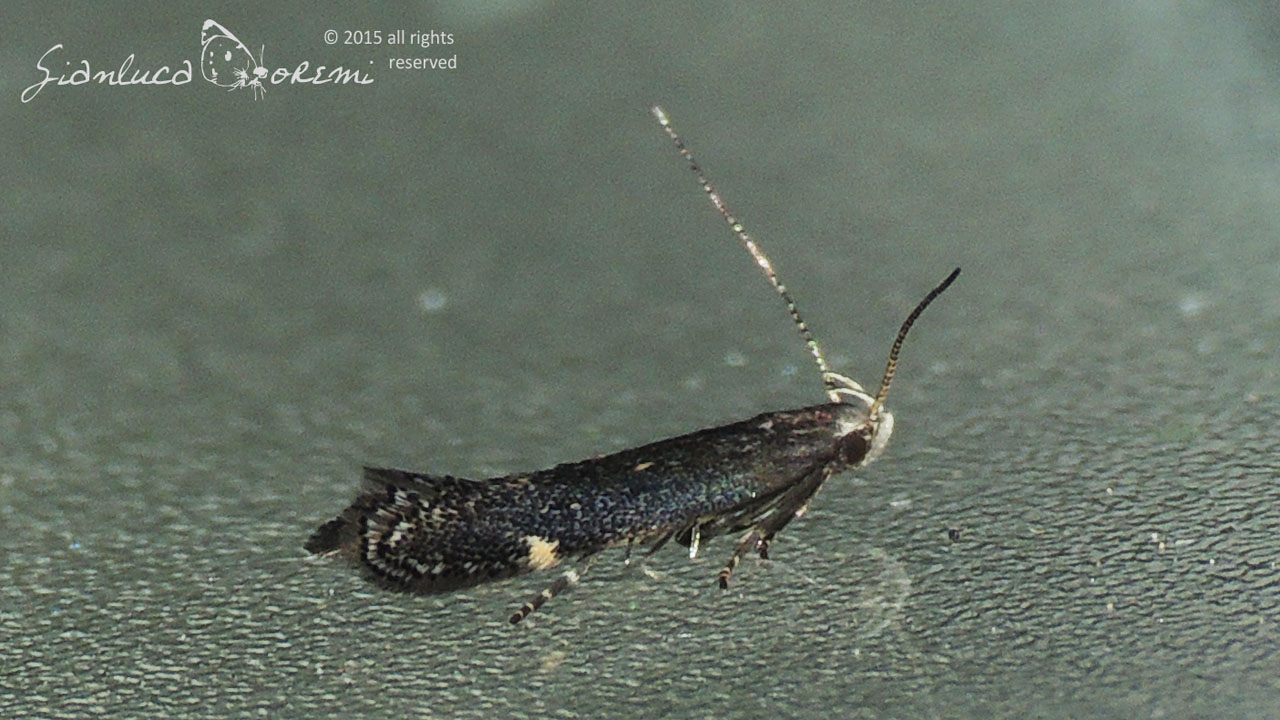Aproaerema anthyllidella
(Hübner, [1813])
-
 Subfamily: Anacampsinae, Anacampsini
Subfamily: Anacampsinae, Anacampsini -
 Wingspan: 10-12 mm
Wingspan: 10-12 mm -
 Flight period: May - Sep
Flight period: May - Sep -
 Spread: Common
Spread: Common -
 Host plants: Fabaceae
Host plants: Fabaceae
Information
The Aproaerema anthyllidella is a moth of the Gelechiidae family, with a wingspan of 10-12 mm.
Kyrgyzstan, Iran and North American.
The background color of the front wings of Aproaerema anthyllidella is dark brown-black with cream markings.
Two of these markings, approximately triangular in shape, are located on the costa and on the inner margin in the postiscal region, one in correspondence with the other.
A third, elongated, elliptical mark is visible in the discal region near the discoidal cell. These markings on the wings are variable in intensity
and sometimes they are completely absent.
The strongly fringed rear wing is greyish white with cream-colored shades along the edge that can extend to the fringes.
The head with long curved palps is of the same background color as the front wing, as well as the thorax, the abdomen is slightly lighter.
The larvae are brown / brown in color, with small black dots on each segment. Dark brown / black prothoracic head and shield. **
The brown pupa with reddish hues on the abdominal segments is found inside a silky cocoon which is itself inside a folded or rolled leaf. **
The Aproaerema anthyllidella is bivoltine, the adults are visible from May to June and again from August to September.
The larvae are found from April to May and again, in the second generation, from July to August; it is not known at what stage this species winters.
It lives mainly on dunes, meadows and dry pastures with prevalence in the areas where one of the nourishing plants is present.
The larvae in the first stages are leaf miners, while in the subsequent moults they live freely among the leaves, sometimes also feeding on the flowers.
The larvae feed on various herbaceous plants, and although they have a predilection for Anthyllis vulneraria.
They can also be found on Chamaecytisus, Coronilla, Cytisus, Dorycnium retto, Galega officinalis, Glycine max, Hymenocarpos circinnatus, Lathyrus pratensis, Lathyrus tuberosus,
Lotus corniculatus, Medicago lupulina, Medicago sativa, Melilotus alba, Onobrychis viciifolia, Ononis repens, Ononis rubifolia, Ononis spinosa, Ornithopus, Oxytropis pilosa,
Phaseolus vulgaris (bean), Psoralea bituminosa, Trifolium pratense, Trifolium repens, Trigonella monspeliaca, Vicia cracca and field bean.
* Lepidoptera mundi https://lepidoptera.eu/ - Fauna Europea https://fauna-eu.org/
** Bestimmungshilfe für die in Europa nachgewiesenen Schmetterlingsarten - http://lepiforum.de/ -

















 EN
EN ITA
ITA
Social and publications